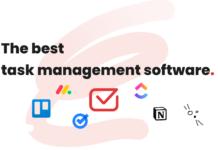
When you see the term ‘online event’, you probably immediately picture the kind of events live-streamed by tech giants like Apple and Google when they want to announce new products or services. Indeed, these events could be classed as ‘online’; however, they reflect only one specific format of online event.
As you watch Apple unveil a new iPhone or something similar on your online-connected device’s screen, you are viewing what is essentially known as a webcast. This works very much like a TV show, in the sense that there is a one-way flow of information — but what if you want to hold a more interactive online event?
Why do you want to hold an online event in the first place?
It could be simply because you have a new product to launch and want to drum up hype and publicity for it. In this situation, showing off that product in a webcast could certainly help you to get the word out to a very large number of people at once.
As TechFunnel notes, webcasts can accommodate thousands of viewers. However, what if you want to take questions from the audience at some point? If this event will be online, a webinar is certainly a wise choice of one to deliver, as the format is built to foster interactivity between the presenter and their audience.
The trade-off here would be the number of people you could have in that audience. With a webinar, you would only be able to invite a few hundred people at most to the party — but that compromise could be worth it if you reckon that a Q&A session would cast an especially flattering light on your product.
Will the event only be for members of your employee base?
If so, a webinar would certainly make more sense than a webcast when it comes to the event’s format. That’s because you would naturally want to have relatively intimate conversations with members of your team so that you can make sure they are all on the same page and at ease with your plans.
When held within a business, a webinar can be used for a wide range of work meetings. These can include training events; after all, when you want to educate employees, you will want to keep a close eye on each of them as they learn, just to make sure none of them fall too far behind.
A webinar can help you to establish trust
You still shouldn’t underestimate the webinar’s worth as a promotional tool for reaching out to potential customers and other people outside the business. According to statistics posted by Search Engine Land, 8.78% of webinars have 50 or fewer attendees — and only 2% of webinars attract over 500 attendees.
So, if you do get a webinar right, you could effectively portray yourself as a thought leader in your field — and, by extension, enhance the reputation of your company as a whole. You could also potentially repurpose webinar content as blog posts, video snippets and so forth.








